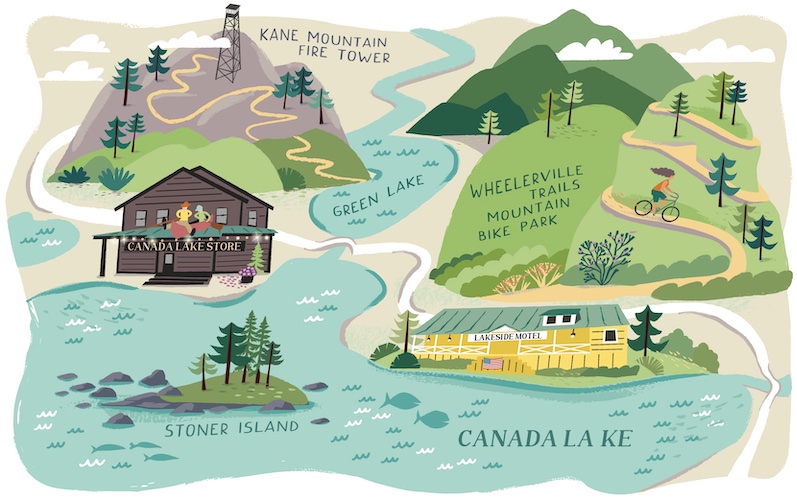Throughout 2019, in celebration of Adirondack Life’s 50th anniversary, we’re sharing an article per week from our archives—one for each year since 1970. In 2002, environmental activist and author Bill McKibben, a longtime contributor to the magazine, imagined what would have happened if part of the Adirondacks had become a national park.
In 1967 Laurance Rockefeller, brother of then-governor Nelson Rockefeller, called for the creation of a 1.7-million-acre Adirondack Mountains National Park—within New York State’s Adirondack Park—to be comprised of existing Forest Preserve plus acquired private lands. Rockefeller’s proposal took New Yorkers by surprise and gave a big nudge to the movement for greater state control in the Adirondacks.
So what would have become of the region had a national park been created? In a word, Gatlinburg. Tennessee’s Gateway to the Smoky Mountains National Park. Home of the Star Cars museum and Elwood Smooch’s Hillbilly Hoedown, not to mention a plethora of wedding chapels performing more ceremonies than any town in the country, Las Vegas included. Lake George inflated with a pump and plugged in to a Surroundsound amp.
National parks come with an entrance—there is a clearly defined inside and a clearly defined outside. Inside is all green, and outside is all souvenir shops. Now, national parks are a very good thing, better than most of the alternatives. There are places where both nature and the economy would benefit dramatically from new ones—the North Woods of Maine, for instance, where there is almost no protected land, and not much of an economy left either, and where advocates are slowly gaining in a battle for the next national park.
And clearly the Adirondacks would have qualified as one of these gems: as Laurance Rockefeller’s planners wrote, “There is no wild area of scenic mountains, lakes, streams and forest of comparable quality and magnitude anywhere else in the eastern half of the United States.” It’s easy to imagine the entrance gates going up at North Hudson, Star Lake and Speculator, the guys in the funny hats selling tickets.
But one glory of the Adirondack Park is precisely its fuzziness. The inside and the outside are less clear: the Forever Wild land wraps around hamlets, the forest that is working for the timber companies lies next to—resembles, even—the forest that is working for the watershed, the wildlife, the soul. Hell, the closest thing to visitor centers are buried in the deep interior at Newcomb, North Creek, Inlet and Paul Smiths. It only works because there is so much public land—more acreage than Rockefeller envisioned for his park, in fact, when all the recent acquisitions are totaled up.
It’s more interesting than a national park, however. More interesting because it looks more like the rest of the world, where wildness and settlement still coexist in some uneasy communion. We have the High Peaks and the St. Regis Lakes and all the rivers and all the rest. We also have Onchiota and Piseco, Sabael and Olmsted ville—instead of Gatlinburg. We have, in short, something of a model, and something of a paradise. Laurance Rockefeller helped that process along—in the wake of his proposal came the commission that formed the Adirondack Park Agency. But all in all, there’s a lot to be said for being the biggest state park in the country.























